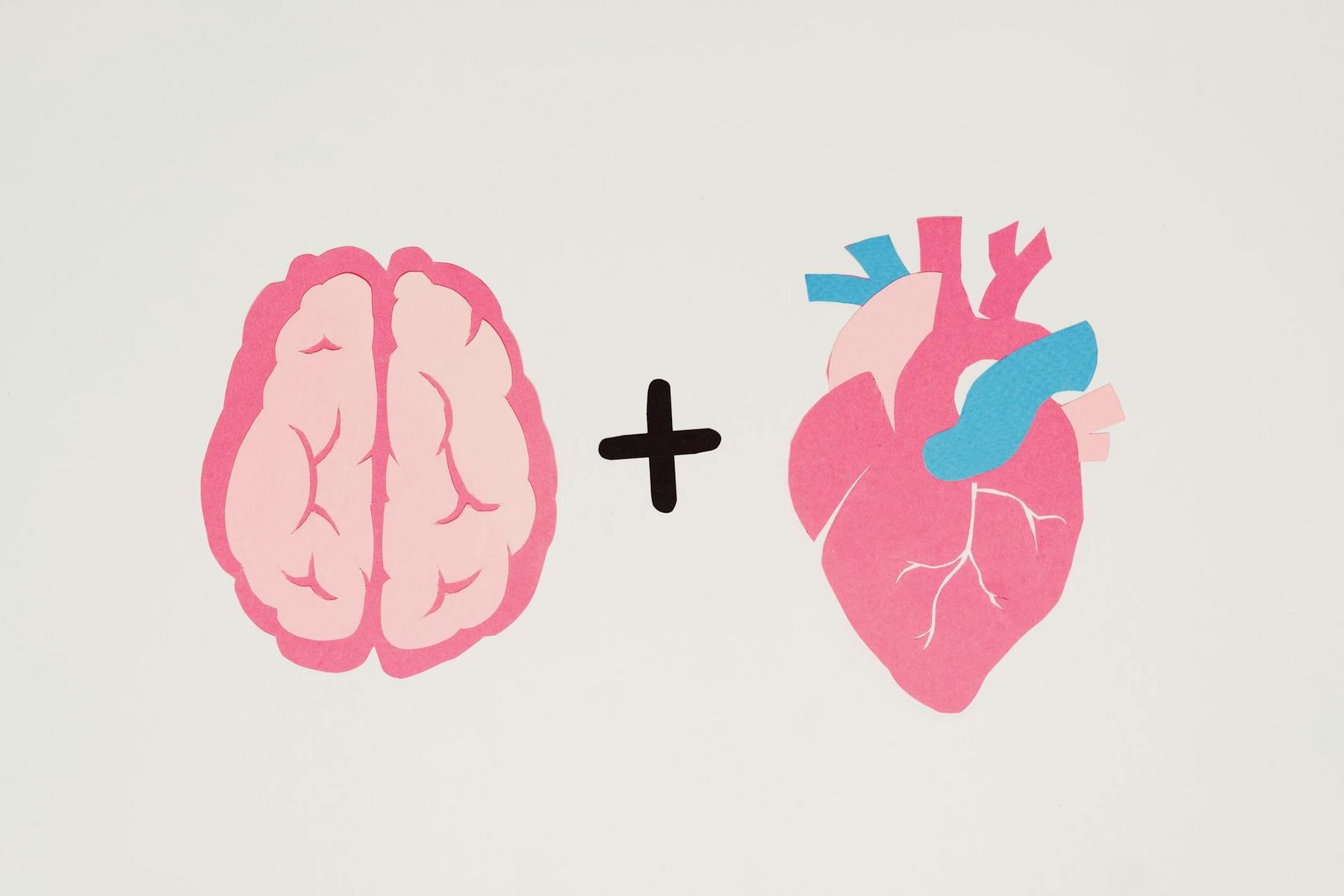The persistent hum of worry. The relentless anticipation of catastrophe. For millions of Australians, generalised anxiety represents far more than occasional nervousness—it manifests as a pervasive, debilitating condition that infiltrates every dimension of daily existence. Whilst fleeting concern serves an evolutionary purpose, preparing us for genuine threats, generalised anxiety disorder (GAD) transforms this protective mechanism into an exhausting state of perpetual hypervigilance. As we navigate an increasingly complex world characterised by economic uncertainty, environmental concerns, and unprecedented social connectivity, understanding the prevalence and patterns of generalised anxiety has never been more critical. This comprehensive exploration examines the epidemiological landscape of GAD, revealing the demographic realities, risk factors, and evolving patterns that define one of the most common yet misunderstood psychological conditions affecting contemporary Australian society.
What Exactly Characterises Generalised Anxiety Disorder?
Generalised anxiety disorder represents a distinct clinical presentation characterised by excessive, uncontrollable worry about various aspects of daily life persisting for at least six months. Unlike situational anxiety that resolves when a stressor diminishes, GAD maintains its grip regardless of external circumstances, creating a self-perpetuating cycle of apprehension and physiological distress.
The hallmark of GAD lies in its pervasive nature—individuals experience persistent worry about multiple domains including work performance, relationships, health, finances, and seemingly trivial matters that others might dismiss without concern. This worry proves difficult to control, often interfering with concentration and decision-making capabilities. The cognitive symptoms invariably accompany physical manifestations: muscle tension, fatigue, sleep disturbances, restlessness, and difficulty concentrating create a constellation of experiences that significantly impair quality of life.
What distinguishes GAD from ordinary worry is the intensity, duration, and disproportionate nature of the anxiety relative to the actual likelihood or impact of feared outcomes. Individuals with GAD recognise their worry as excessive yet remain unable to curtail it, creating additional distress about their inability to manage their own thought patterns.
The disorder exists on a spectrum, with severity varying considerably between individuals. Some experience mild symptoms that create manageable inconvenience, whilst others face profound impairment affecting occupational functioning, social relationships, and physical health. Understanding this heterogeneity proves essential for recognising the diverse presentations of GAD across populations.
How Prevalent Is Generalised Anxiety Across Different Populations?
The global burden of anxiety disorders represents one of the most significant public health challenges of the contemporary era. According to the World Health Organisation, anxiety disorders affect approximately 301 million people worldwide, making them the most common category of mental health conditions globally. Within this broader classification, generalised anxiety disorder constitutes a substantial proportion of diagnosed cases.
Australian data reveals concerning trends in anxiety disorder prevalence. Research indicates that anxiety disorders affect approximately 3-4% of the Australian population at any given time, with generalised anxiety disorder representing a significant proportion of these cases. The lifetime prevalence—the proportion of individuals who will experience GAD at some point during their lives—exceeds these point prevalence figures substantially, suggesting that many Australians will encounter this condition during their lifespan.
The demographic distribution of generalised anxiety reveals striking patterns that illuminate underlying vulnerability factors and social determinants of psychological distress. Gender emerges as the most pronounced demographic variable, with females experiencing GAD at approximately twice the rate of males across virtually all age groups and cultural contexts. This gender disparity appears consistent across international studies and persists even when controlling for healthcare-seeking behaviour and diagnostic biases.
Age patterns demonstrate that GAD can emerge at any life stage, though onset most commonly occurs during young adulthood, with median age of onset typically falling between late adolescence and the mid-thirties. However, older adults represent a frequently overlooked demographic experiencing significant GAD prevalence, often complicated by concurrent physical health conditions and social isolation.
The COVID-19 pandemic precipitated unprecedented increases in anxiety disorder prevalence globally. The World Health Organisation documented a 25% increase in anxiety disorder prevalence during the first year of the pandemic, reflecting the profound psychological impact of uncertainty, social isolation, economic disruption, and health concerns that characterised this period.
| Demographic Factor | Pattern Observed | Key Considerations |
|---|---|---|
| Gender | Females experience approximately 2:1 higher prevalence | Potentially influenced by biological, hormonal, and social factors |
| Age of Onset | Median onset late adolescence to mid-thirties | Can occur at any age; older adult GAD often underdiagnosed |
| Socioeconomic Status | Higher prevalence in lower socioeconomic groups | Associated with chronic stress and reduced access to support |
| Employment Status | Elevated rates in unemployed individuals | Bidirectional relationship—unemployment causes and results from anxiety |
| Geographic Location | Urban areas show higher reported prevalence | May reflect better access to diagnosis rather than true difference |
What Risk Factors Contribute to Generalised Anxiety Development?
The aetiology of generalised anxiety disorder reflects a complex interplay of genetic predisposition, neurobiological factors, developmental experiences, and environmental stressors. Understanding these risk factors illuminates why certain individuals develop GAD whilst others maintain resilience despite comparable stressor exposure.
Genetic factors contribute substantially to GAD vulnerability, with heritability estimates suggesting that 30-50% of anxiety disorder risk stems from inherited factors. Family studies consistently demonstrate that first-degree relatives of individuals with GAD face elevated risk for developing the condition themselves. Recent genetic research has identified specific gene variants associated with anxiety susceptibility, though no single gene determines GAD development. Rather, multiple genetic variations interact with environmental factors to influence overall risk.
Neurobiological research reveals alterations in brain structure and function among individuals with GAD. Regions involved in threat detection, emotional regulation, and executive control—including the amygdala, prefrontal cortex, and anterior cingulate cortex—demonstrate altered activity patterns in GAD. These neurobiological differences may represent both predisposing factors and consequences of chronic anxiety, highlighting the bidirectional relationship between brain function and psychological experience.
Developmental experiences profoundly shape anxiety vulnerability. Childhood adversity, including abuse, neglect, parental psychopathology, and family dysfunction, correlates strongly with elevated GAD risk in adulthood. Early-life stress appears to sensitise stress-response systems, creating heightened reactivity to subsequent stressors throughout life. Attachment patterns established during childhood likewise influence anxiety trajectories, with insecure attachment styles predicting elevated anxiety in later developmental stages.
Personality characteristics contribute to GAD susceptibility. Individuals with temperamental traits of behavioural inhibition, neuroticism, and negative affectivity demonstrate elevated risk. These personality dimensions reflect relatively stable patterns of emotional reactivity and coping styles that influence how individuals interpret and respond to environmental demands.
Chronic stress represents a powerful precipitant of GAD, particularly when stressors prove uncontrollable or unpredictable. Financial insecurity, relationship difficulties, occupational demands, and caregiving responsibilities create sustained activation of stress-response systems that may eventually dysregulate normal anxiety modulation mechanisms. The cumulative burden of multiple concurrent stressors proves particularly detrimental.
Physical health conditions demonstrate bidirectional relationships with generalised anxiety. Chronic pain, cardiovascular disease, respiratory conditions, and endocrine disorders all correlate with elevated GAD prevalence. Whether anxiety precipitates physical illness, physical illness triggers anxiety, or shared underlying factors contribute to both remains an active area of investigation varying by specific condition.
How Do Generalised Anxiety Patterns Differ Across the Lifespan?
Generalised anxiety manifests differently across developmental stages, with age-specific presentations requiring tailored recognition and understanding. Appreciating these lifespan patterns proves essential for identifying GAD across diverse age groups and understanding how the condition evolves over time.
During childhood and adolescence, generalised anxiety often presents through excessive worry about academic performance, social acceptance, and competence across various domains. Young people with GAD may demonstrate perfectionism, repeatedly seek reassurance, exhibit school avoidance, and manifest physical complaints including headaches and abdominal distress. The developmental period between ages 10-19 represents a particularly vulnerable window, coinciding with significant neurological development, hormonal changes, and increasing social and academic demands.
Adolescent anxiety frequently goes unrecognised, mistaken for typical teenage stress or dismissed as temporary adjustment difficulties. However, adolescent-onset GAD frequently persists into adulthood without appropriate support, establishing chronic patterns that prove increasingly resistant to change. The normalisation of stress during this developmental period may inadvertently delay recognition and response to clinically significant anxiety.
Young adulthood presents unique anxiety triggers centred on identity formation, educational attainment, career establishment, and relationship development. The transition to independence, financial responsibility, and adult social roles creates substantial uncertainty that may precipitate or exacerbate generalised anxiety. This developmental period coincides with peak onset age for GAD, suggesting particular vulnerability during this transitional phase.
Middle adulthood introduces distinct anxiety patterns focused on occupational achievement, financial security, parenting responsibilities, and ageing parent care. The simultaneous demands of multiple life roles create sustained stress that may overwhelm coping capacities. Middle-aged individuals with GAD often present with prominent worry about children’s welfare, job security, and long-term financial planning, reflecting the specific concerns characteristic of this life stage.
Older adults experience generalised anxiety through the lens of age-specific concerns including physical health decline, cognitive changes, social losses, and mortality awareness. GAD in later life frequently co-occurs with depression, complicating both presentation and recognition. Older adults may preferentially report physical symptoms rather than psychological distress, potentially contributing to underdiagnosis in this demographic. The intersection of multiple chronic health conditions, polypharmacy concerns, and reduced social support networks creates particular complexity in older adult anxiety presentations.
What Contemporary Factors Influence Generalised Anxiety Prevalence?
The 21st-century social, technological, and economic landscape introduces novel anxiety precipitants whilst amplifying established risk factors. Understanding contemporary influences on generalised anxiety prevalence illuminates the evolving nature of this condition and informs responses appropriate to current contexts.
Digital connectivity fundamentally transforms human experience, creating unprecedented opportunities for social comparison, information access, and perpetual availability. Social media exposure correlates with elevated anxiety symptoms, particularly among younger demographics. The curated nature of online self-presentation generates unrealistic standards, whilst constant connectivity eliminates traditional boundaries between work and personal life. The paradox of connection—feeling simultaneously hyperconnected yet profoundly isolated—characterises much contemporary anxiety experience.
Economic uncertainty has intensified dramatically, with housing affordability crises, employment precarity, and cost-of-living pressures creating sustained financial stress across Australian society. Younger generations face particularly acute challenges, confronting higher education costs, reduced employment stability, and diminished prospects for property ownership compared to previous generations. These structural economic changes translate directly into elevated generalised anxiety, as fundamental security needs remain chronically unmet.
Environmental concerns contribute increasingly to anxiety experiences, particularly among younger individuals. Climate change awareness, environmental degradation, and uncertainty about planetary futures create existential worry that extends beyond personal circumstances. This “eco-anxiety” represents a rational response to genuine threats yet may evolve into generalised patterns that impair functioning.
Global connectivity exposes individuals to international crises, humanitarian disasters, and geopolitical instability with unprecedented immediacy. The 24-hour news cycle and rapid information dissemination ensure constant awareness of threats both proximal and distant. This expanded threat landscape taxes cognitive capacities to assess and respond appropriately to genuine versus remote dangers.
The COVID-19 pandemic represents the most significant recent disruption to global mental health, with documented increases in anxiety disorder prevalence persisting beyond acute pandemic phases. Beyond direct health concerns, the pandemic precipitated widespread economic hardship, social isolation, routine disruption, and future uncertainty that converged to create unprecedented psychological strain. The pandemic’s legacy continues influencing anxiety patterns, particularly regarding health vigilance and social interaction comfort.
Workplace transformation—including increased automation, gig economy expansion, and remote work normalisation—introduces new anxiety dimensions. Job security concerns, skill obsolescence fears, and blurred work-life boundaries contribute to sustained occupational stress. The expectation of perpetual productivity and availability creates chronic low-level anxiety that may eventually consolidate into GAD.
How Is Generalised Anxiety Recognised and Assessed?
Accurate recognition and assessment of generalised anxiety disorder require systematic evaluation of symptom patterns, duration, severity, and functional impact. Standardised approaches ensure consistent identification across clinical contexts whilst accounting for individual presentation variability.
The Generalised Anxiety Disorder-7 (GAD-7) scale represents the most widely implemented brief screening instrument for GAD. This seven-item questionnaire assesses symptom frequency over the preceding two weeks, generating scores that indicate severity levels from minimal through severe anxiety. The GAD-7 demonstrates strong psychometric properties and proves practical for implementation across diverse healthcare settings. However, screening tools alone cannot establish diagnoses—they identify individuals warranting comprehensive evaluation.
Comprehensive GAD assessment requires clinical interview examining worry content, frequency, duration, controllability, and associated physical symptoms. Clinicians evaluate whether worry proves excessive relative to actual threat probability, whether individuals recognise their worry as disproportionate, and whether anxiety significantly impairs social, occupational, or other important functioning domains. The temporal criterion—symptoms persisting for six months or longer—differentiates GAD from transient anxiety responses.
Differential diagnosis proves critical, distinguishing GAD from other anxiety presentations including panic disorder, social anxiety disorder, specific phobias, and obsessive-compulsive disorder. Whilst symptom overlap occurs frequently, the predominant presentation—generalised worry versus panic attacks, social fears, specific triggers, or intrusive thoughts—guides accurate classification. Many individuals experience multiple concurrent anxiety presentations, requiring recognition of comorbid conditions.
Assessment must consider potential medical conditions producing anxiety symptoms. Thyroid dysfunction, cardiovascular conditions, respiratory disorders, and neurological conditions may generate anxiety-like presentations. Comprehensive evaluation therefore incorporates appropriate medical screening to exclude physiological causation.
The assessment process also examines co-occurring conditions, particularly depression. GAD and major depressive disorder demonstrate high comorbidity rates, with overlapping symptoms potentially complicating diagnostic clarity. Substance use patterns require evaluation, as individuals may self-manage anxiety symptoms through alcohol or other substances, potentially developing secondary dependence.
Functional impact assessment examines how anxiety affects daily activities, relationships, work performance, and quality of life. GAD severity correlates not merely with symptom intensity but crucially with the degree of impairment experienced. Some individuals maintain relatively preserved functioning despite significant symptoms, whilst others experience profound disability from seemingly moderate anxiety.
Recognising Patterns to Inform Understanding
The epidemiological landscape of generalised anxiety disorder reveals a condition of remarkable prevalence, affecting millions of Australians across diverse demographics and life circumstances. The patterns emerging from contemporary research illuminate both the universal vulnerabilities that transcend individual differences and the specific risk factors that concentrate burden within particular populations. Gender disparities, age-related patterns, socioeconomic gradients, and contemporary stressors converge to create the complex distribution we observe.
Understanding generalised anxiety as a dimensional construct rather than categorical presence—or-absence proves essential. Anxiety exists on a continuum, with clinical GAD representing the severe end of a spectrum encompassing subclinical anxiety that nonetheless impairs wellbeing. This dimensional perspective highlights that many more individuals experience significant anxiety difficulties than meet full diagnostic criteria, expanding our appreciation of anxiety’s public health burden.
The increasing prevalence of generalised anxiety globally and within Australia demands systematic responses addressing both individual susceptibility and environmental contributors. Whilst genetic and neurobiological factors establish foundational vulnerability, modifiable risk factors including chronic stress, social isolation, economic insecurity, and health behaviours offer potential intervention targets. Recognition that GAD emerges from person-environment interactions rather than individual pathology alone shifts perspectives toward comprehensive approaches.
The evolution of anxiety patterns across the lifespan underscores the need for developmentally appropriate understanding and responses. What constitutes excessive worry differs substantially between adolescents, young adults, middle-aged individuals, and older adults, reflecting age-specific concerns and contexts. Failing to account for these developmental patterns risks misidentification and inappropriate responses.
Contemporary influences on generalised anxiety—particularly digital connectivity, economic precarity, environmental concerns, and global uncertainty—represent relatively novel stressors for which evolutionary adaptation proves inadequate. These 21st-century realities require societal-level responses alongside individual-focused approaches. The structural factors driving anxiety prevalence demand attention to social determinants of psychological wellbeing, not merely symptom-focused responses.
The standardised assessment approaches now available, including validated screening instruments and comprehensive diagnostic frameworks, enable systematic identification of GAD across diverse populations and settings. However, assessment represents merely the foundation for appropriate response—recognition must translate into accessible, evidence-based support that addresses the multifaceted nature of generalised anxiety.
Moving forward, the dual imperatives of improving individual identification and addressing population-level drivers will shape Australia’s response to generalised anxiety.
Can generalised anxiety disorder develop suddenly, or does it emerge gradually over time?
GAD typically develops gradually rather than appearing suddenly. Most individuals describe a progressive intensification of worry and anxiety symptoms over months or years, though specific stressors may accelerate or precipitate symptom onset. The six‐month duration criterion inherent in GAD diagnosis reflects this gradual pattern. However, some individuals experience relatively rapid onset following significant life stressors or trauma, with preexisting subclinical anxiety often preceding the full-blown disorder.
Does having a family member with generalised anxiety increase personal risk?
Yes, having first-degree relatives with generalised anxiety disorder significantly elevates personal risk. Heritability estimates suggest that 30-50% of GAD vulnerability stems from genetic factors. While shared environmental factors also play a role, a family history of GAD increases the likelihood of developing the disorder, though it does not guarantee it.
How does generalised anxiety differ from normal worry that everyone experiences?
Normal worry is typically proportional to actual threats, resolves when circumstances improve, and does not interfere significantly with daily functioning. In contrast, GAD involves excessive worry that is disproportionate to actual risk, persists regardless of external circumstances, is difficult to control, and often comes with physical symptoms such as muscle tension, fatigue, and sleep disturbances, all of which significantly impair daily life.
Can generalised anxiety disorder improve without professional intervention?
While some individuals may experience fluctuations or partial improvements in symptoms, GAD generally persists without appropriate intervention. Mild symptoms might be managed with lifestyle modifications and self-help strategies, but moderate to severe cases typically require professional intervention to achieve effective and sustained improvement.
Why do females experience higher rates of generalised anxiety than males?
The higher prevalence of GAD in females is likely due to a combination of biological, psychological, and social factors. Hormonal fluctuations, differences in brain structure and stress-response systems, and social factors such as exposure to certain stressors and differences in coping mechanisms and healthcare-seeking behaviors all contribute to the doubled risk observed in females compared to males.













